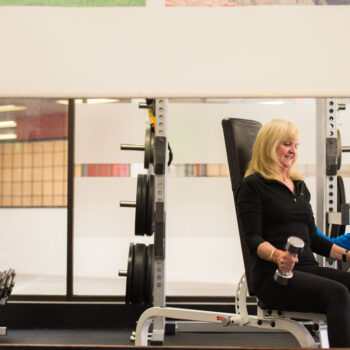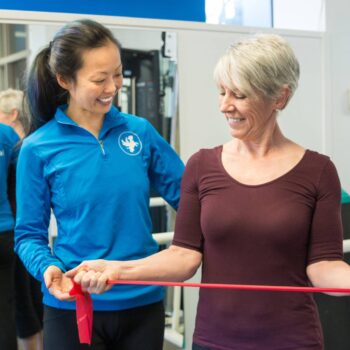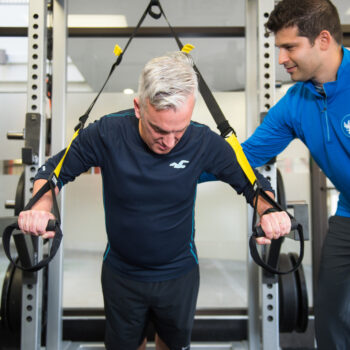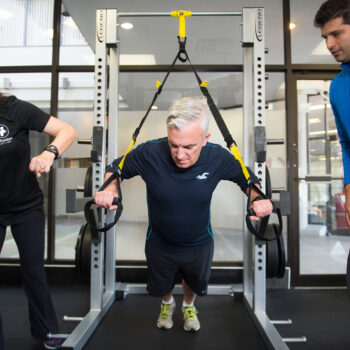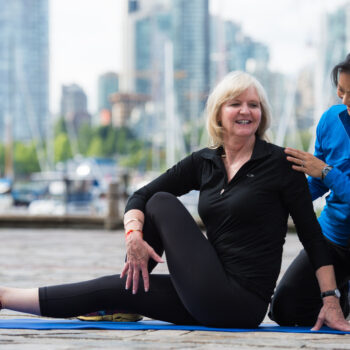Have you ever had an ache and wondered if the pain means that your muscles are growing and getting stronger, or if it means there’s been damage and needs some rest?
Kinesiologists and trainers tend to classify these uncomfortable sensations as “good pain” or “Bad pain” but what does that mean? Isn’t all pain bad?
It can be challenging for new gym-goers to know how hard to push themselves and understand what your body is telling you. Is this sensation good pain good or bad? In this blog post, we’re going to explore the differences between good pain and bad pain and how to interpret the different signals your body is giving you.
What Is Good Pain?
Muscle fatigue and what we call “DOMS” (delayed onset muscle soreness) is usually felt 12-48 hours after your act of physical activity and will usually start to subside shortly after that period.
DOMS type muscle fatigue is the result of microscopic tears in the muscle tissue that are caused by overloading your muscles more than they are used to. For example, by increasing the amount that you bench press, your muscles are going to try to train themselves to be able to lift that extra amount and in doing so, produce those microscopic tears. Generally, the more you push yourself, the more muscle fatigue you will experience.
If your soreness doesn’t prevent you from doing activities of daily living, such as brushing your teeth, brushing your hair, sitting, standing, chasing after your kids or dog, but elicits a groan and choice words for your trainer, we would fit this kind of discomfort into the Good Pain category.
Here are some tips for dealing with soreness after exercise from Elizabeth Quinn, MSc. Sports Medicine, BSc. Psychology 1:
- General muscle soreness will go away in 3 to 7 days with no special treatment so if you’re unsure and the soreness is mild then just wait to see if it subsides. If the soreness persists then it might be time to seek treatment.
- Use the RICE method of treating injuries: Rest, Ice, Compression, Elevation. If this doesn’t help then consult with a kinesiologist, physiotherapist, or doctor.
- Although research doesn’t find gentle stretching reduces soreness, some people find it simply feels good.
- If you are in constant or considerable pain, try using a nonsteroidal anti-inflammatory medication (aspirin or ibuprofen) to reduce the soreness, though it will not actually speed healing.
- There is some evidence that performing Yoga may reduce muscle fatigue DOMS.
- Although it might seem obvious, avoid any vigorous activity that increases pain.
- Allow the soreness to subside thoroughly before performing any vigorous exercise.
What Is Bad Pain?
Bad pain occurs when there is damage to muscle, tendons or ligaments, bone or cartilage. The pain does not seem to go away and resurfaces commonly during your workouts or afterwards. Do not confuse this recurring pain with “feeling the burn” during a workout. The bad pain will tend to last longer and may limit your usual daily activities such as brushing your teeth as well as movement.
Pain surrounding a joint may be due to damage to a tendon, a ligament or cartilage. All of these would be considered to cause bad pain and maybe (but not always) described as a sharper sensation.
If the pain is due to an unknown cause and keeps recurring, you may have a stress fracture. This is a localized pain (only in one spot, along the fracture) that can turn into a larger fracture if not treated and can become a lifelong problem.
Dr. Carol Otis, M.D. provides some warning signs of bad pain and recommends if any of these do occur, you should seek advice from your doctor as soon as possible. Note that you do not have to have all of these warning signs to be diagnosed with a bad pain:
- Your pain does not go away in 12 to 48 hours after ice treatments, rest and gentle stretching
- Your pain is sharp and/or severe
- Your pain is localized in the joint, not the muscles surrounding it
- Your pain limits your motion.
- Your pain is accompanied by numbness, weakness or swelling in the joint.
Treatments of bad pain include seeing your physician or physiotherapist for exercises and a proper diagnosis as well as RICE. Whenever in doubt consult a doctor about your condition.
Preventing Pain
While good pain is a normal part of a strengthening program, it is important to ensure that it never crosses into bad pain. One wrong move or poorly programmed workout can easily set us back if we need to take time off for unnecessary bad pain recovery. Prevention of bad pain includes but is not limited to:
- Using proper technique during your training or workouts
- Using the right equipment
- Avoid pushing yourself too hard too fast
- Giving yourself adequate rest periods, especially if you’re just starting a workout routine. For example, if you want to start a running program but haven’t run in a year, don’t try to run three times a week for an hour.
Avoid any sudden changes to your exercise routine or the time you exercise. Another way to find your comfort zone is to use the ten percent rule, which dictates you increase the intensity of your workout by ten percent each week, gradually building up your muscles over time.
If you’re new to working out, it might be worth the investment to work with a personal trainer who can guide you through a workout. An experienced personal trainer will know how hard to push you and build in appropriate progressions.
Reading your own body is a good indicator of whether you are feeling good or bad pain. Pay attention to how you’re feeling is important to any workout routine but if you’re still unsure, please give us a call and we’ll be happy to help you with any questions you might have.
Sources:
- 1. http://sportsmedicine.about.com/cs/injuries/a/doms.htm; Elizabeth Quinn, MSc. Sports Medicine, BSc. Psychology; Accessed July 17, 2009
- 2. http://www.sportsdoctor.com/articles/pain.html; Dr. Carol L. Otis, M.D., Accessed July 21, 2009


